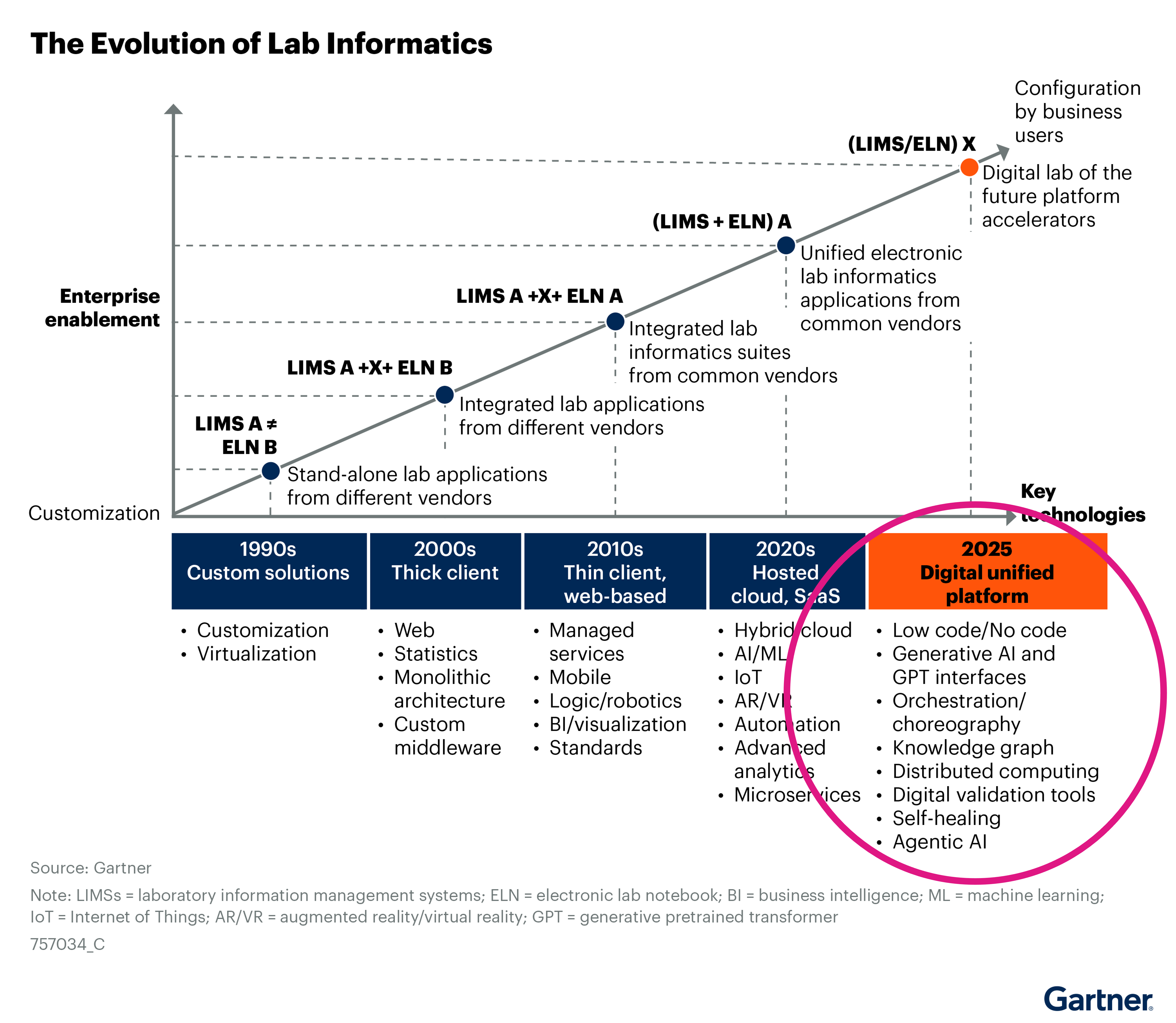L7 | CHATS
thought leadership
Gartner’s 2025 Vision for LIMS is Clear… and L7 has Been Building it Since 2012
by Robert Zeigler, Ph.D. | posted on May 06, 2025
When I joined L7 Informatics at the beginning of 2018, I joined not just a company but a vision for what the future of life science informatics could be. The systems of the day were fragmented into niches, with an abundance of letters: LIMS, LIS, LES, SPDM, and more. But the vision at L7 was for something different – a single, unified platform capable of spanning the entire scientific endeavor, enabling scientific IT organizations to move at the pace of science. It was a bold, ambitious vision, and exactly what life sciences needed to connect disparate data.
Fast forward seven years later to Gartner’s Market Guide for Laboratory Information Management Systems. In it, Gartner lays out the realities of modern scientific organizations: many separate systems with a rat’s nest of integrations across them to attempt to connect data. But, as we noted in a previous blog post, integrating disparate systems doesn’t scale and won’t provide the framework necessary to support modern AI endeavors. Instead, the report points to the systems of the future: digital unified platforms.
By bringing together multiple capabilities into one platform, the data model is unified, the number of separate systems to support is reduced, and the web of integrations is streamlined. But more importantly, a unified platform provides the ability to truly break down silos and to contextualize the data being captured: to connect the dots from patients to insights, from research to development, from development to manufacturing.

The best part is that you don’t have to wait for the next generation of systems to arrive because the future is now. While other companies scramble to bolt together different solutions to try to present a unified platform, at L7, we’ve been building L7|ESP® as a composable, data-centric, unified orchestration platform from the ground up for years. It’s a single system capable of capturing complex data and processes across the entire life sciences domain, bringing together all your science and your business in one place.
If you’re leading digital transformation in a life sciences organization—whether in research, manufacturing, or IT—Gartner’s report should serve as both a roadmap and a warning. Roadmap, because the future is now clearly defined: a unified platform that eliminates silos and accelerates innovation through orchestration and contextualized data. A warning, because the cost of waiting just went up.
The days of managing separate systems for lab workflows, sample tracking, batch records, and compliance are numbered. Organizations that continue down that road will find it increasingly difficult to scale, enable AI, and move fast when new opportunities arise.
Don’t wait for the rest of the industry to catch up. You can leap ahead today, starting with a platform that’s already built for Gartner’s 2025 vision and beyond. Visit www.L7informatics.com to explore how L7|ESP can support your transformation—or contact our team to start the conversation.
